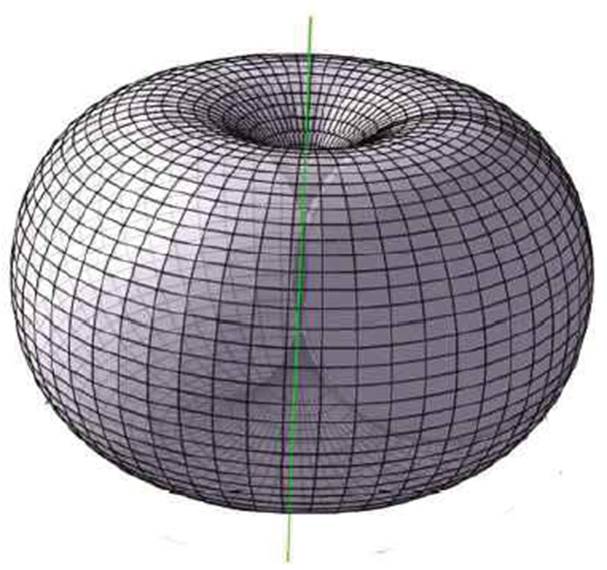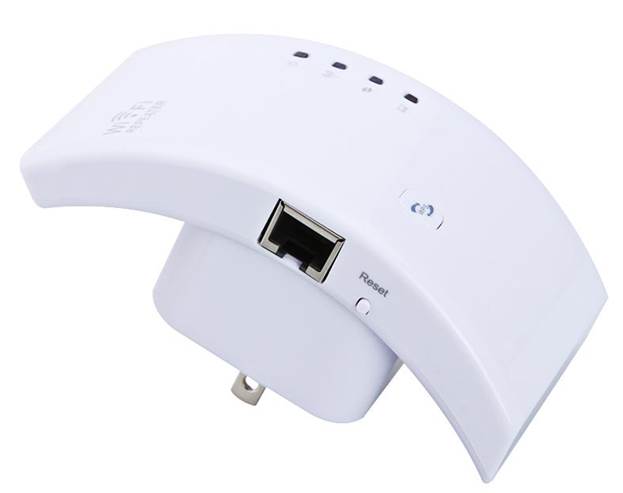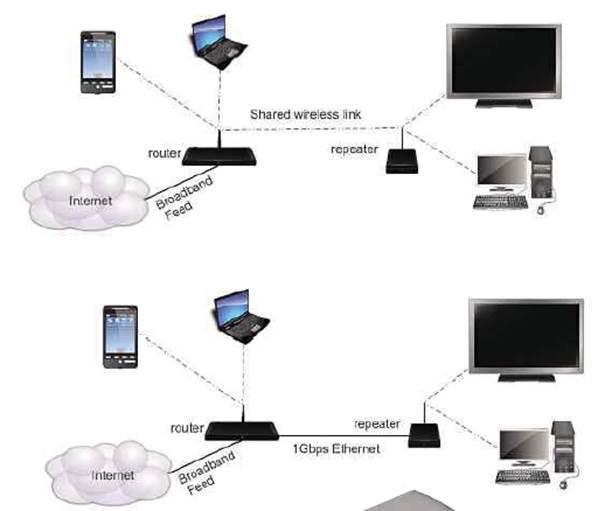Channel Hopping
The 2.4GHz range is the range of
frequencies between 2.4 and 2.5GHz, which is divided into ‘channels’; the width
of the channels depends on the standard.
For example, the 802.11b standard uses
22MHz channels 802.11 g uses 20MHz channels and 802.11n can use 10MHz or 40MHz
channels. As these channels are spaced only 5MHz apart, they can obviously
overlap each other and cause interference.
The only 20MHz non-overlapping channels in
the 2.4GHz range recommended for use in this country are channels 1, 6, and 11.
Most Wi-Fi routers default to one of these channels. A good Wi-Fi analyzer will
show you any other nearby networks, the channels that they are using and the
signal strength, which will allow you to select your own channels to avoid
overlap and interference. Some apps will even advise on which channels to use.
Another Brick in the wall
Walls and floors are not helpful in the
Wi-Fi world. And if you live in an older property like mine, with solid brick
internal walls, you may be surprised by how much the signal drops as you leave
the room containing the router.
Although reflection or ‘scatter’ can
propagate the signal, for best results Wi-Fi signals need to travel to a
straight line, and a diagonal path increases the effective thickness of a wall
or floor. The density of the wall or floor will also determine the reduction in
signal strength.

If
you have a house with plasterboard partition walls, you may have better
coverage
In fact, the only benefit of solid brick
walls is that they limit the interference from other nearby networks and reduce
the leakage from your own.
If you have a house with plasterboard
partition walls, you may have better coverage, but there are other factors to
consider Electrical interference form device such as refrigerators, microwave
ovens, fluorescent lamps, mains cables and other wireless devices such as
phones or wireless keyboards can also disrupt the signal.
Another consideration is the shape of the
radio field. Omni-directional aerial-like a doughnut with a stick in the
center. These aerials are normally mounted upright for horizontal coverage.
When looking at the aerial from above or below, where the doughnut hole is, you
will have a ‘deal zone’ without a signal.
Wireless Aps have a limit to their
transmission power of 100mW on the 2.4GHz band, and 200mW or 1W on the 5GHz
band, depending on channel. This is to reduce interference with other networks.
Increasing the power of the signal from the AP would not necessarily improve
performance anyway, as we are looking at a two-way exchange: the Wi-Fi card in
your laptop may be able to receive a stronger signal, but if it cannot transmit
its reply, the connections will fail, so the range is no greater. Most average
homes may well be able to manage with a single wireless AP, especially if
placed centrally, but larger numbers of wireless devices are being deployed all
the time. In a four-person family you might have two or more devices per person
(e.g. phone, a table and a laptop). Add a few ‘smart’ devices TVs, Blu-ray
players, etc, and the airwaves can soon get congested.
Security
It goes without saying that you should
secure your network, otherwise you may have outsiders snooping into your files
or ‘piggy backing’ on your internet connection.
You should definitely change the default
password for accessing the router’s web management page, as the default
password for a particular device is often easily discovered via Google
Next you should set up wireless encryption.
There are several levels of protection.
WEP (Wired Equivalent Privacy) was the
first wireless encryption method. It is no longer considered safe, as it can be
quite easily cracked. It has been superseded by WPA and then WPA2 using
AES-CCMP encryption, which is also required for the fastest data rates with
802.11n. You should set up WPA2 encryption with a strong password.

The
shape of the wireless field around a single aerial position, which is
represented by the green line
WPS (Wi-Fi Protected Setup) is an extension
to WPA, which allows security settings to be made by entering an eight-digit
PIN or by pressing a button on the router and a device to associate the two.
Unfortunately, it can affect performance, and there are also problems with it,
which actually mean that, can be less secure than standard WPA2, so it is
advisable to disable it on your router if you can.
Additional measures that you can take
include hiding the SSID of the wireless network. The SSID (Service Set
Identifier) is broadcast by default on most routers, so disabling this will
mean that anyone trying to attach to your network will need to know the SSID,
as it will not be visible in Wi-Fi scans.
The MAC address is a unique 12 digit number
that is assigned to each network card manufactured, and you can use MAC address
filtering to limit the devices that can access your network. Although it is
possible to ‘spoof’ a MAC address, it is yet another layer of defense to deter
casual intrusion.
Although it is probably not possible to run
a totally secure wireless network, as with any security system the more
difficult it is to defeat, the higher the chance that an attacker will give up
and go elsewhere looking for easier targets. If you employ all of these
methods, you will deter all but the most determined intruder.
Wi-Fi Realities
What people often don’t realize that Wi-Fi
bandwidth is shared? Only one device can transmit or receive at any given time,
and there are several factors which all conspire to reduce the free flow of
traffic. When you come to actually measure data throughput, it quickly becomes
obvious that advertised data rates are, well, let’s say optimistic.
Distance/obstructions: the lower signal
strength, the lower the data rate. Higher frequencies have shorter ranges in
air, but offer better penetration of solid objects.
Interference: Multiple wireless devices in
close proximity will of course interfere with one another’s signal and there
are other environmental sources of interference.

A
cheap repeater like this can make a huge difference to your Wi-Fi coverage
Contention: this means more than one device
trying to access the same network connection.
Five Wi-Fi devices accessing a Wi-Fi router
will have to share the available bandwidth. As they will not usually all be
downloading data simultaneously, they will not necessarily divide the available
bandwidth by five, but it will be reduced.
Overhead: the background management of the
wireless network, managing multiple connections, avoiding data collisions,
ensuring that packets are not lost, etc. every active device that is switched
on and connected to the AP (whether or not it is actually in use) adds
overhead.
Mixed standards: Using more than one a, b,
or g device on the Wi-Fi can effectively reduce the speed of n devices. The
effect is not necessarily that noticeable, as devices only impact the network
speed when actually accessing the network, so there will only be a performance
hit if there is a lot of legacy traffic.
MIMO (multiple in multiple out): Newer
models of Wi-Fi router have multiple aerials, and use traffic management and
multiple data streams to improve throughput.
QoS (quality of service): this setting can
priorities time sensitive traffic, such as video streaming or voice over IP
packets. Some 11n routers use the 5GHz band for this traffic, and send les
urgent packets over the 2.4GHz band. On some routers, you may be able to choose
between prioritizing video, data or voice packets, while others may simply
allow you to enable WMM (Wi-Fi multimedia), which tries to maximize throughput
by managing media, voice and data packets differently. If you want stutter-free
video, it’s a good idea to enable this.
Wired
Ethernet connections function at up to
1Gbps full duplex, which means that devices can send and receive simultaneously
at full speed. Wired switches also have a separate port for each connected
device, whereas all wireless connections may effectively share one port. Single
band wireless connections are by nature half-duplex (i.e. only one node can
transmit or receive at any given time), which straight away tells you that the
theoretical maximum speed is only remotely obtainable even with a single device
close to an AP.

The
difference between a wired and wirelessly linked repeater, illustrating the
increase in contention with a wireless only link
Although newer devices with multiple
aerials, dual band radios and multiplexing may improve the situation, both the
AP and the wireless network cards need to match in specification for the best
results. I have found that I need a wireless router and a wireless repeater
linked by Ethernet cable at opposite ends of the house to ensure smooth video
streaming in all rooms.